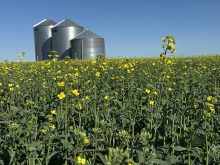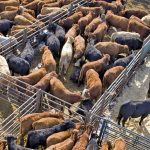The jockeying for seeded acres has the potential to deliver a wild late winter-early spring for markets.
With supplies of most major crops down and a huge demand pull from corn-based ethanol, the profit picture of producing almost any crop is much improved, but as in most years, some crops will pencil out better than others.
In the United States we know that corn area will increase and soybeans decrease and in Canada wheat will decline and canola increase.
But no one knows by how much. That will depend on markets and weather between now and seeding.
Read Also

VIDEO: Catch up with the Western Producer Markets Desk
The Western Producer Markets Desk provides daily updates on agricultural markets, with recent video commentary including looks into canola, wheat, cattle and feed grains.
But in one area of the world, they have already decided rapeseed-canola production is the way to go.
Ukraine’s government in December announced a biofuel plan. One of the focuses was to support rapeseed-canola production to the point that it makes up 10 percent of the country’s seeded area. The government provides a subsidy that works out to about $9.50 per acre for winter rape and about $6.25 for spring-seeded rape.
Seeded area was already soaring in the last three or four years, but it started from a tiny beginning. The crop planted last fall for harvest later this year is about two million acres.
That will double production this year to between 1.3 and 1.5 million tonnes. The government wants to continue expansion to a goal of 7.5 million tonnes in 2010. The government would like to see 75 percent of that crushed in Ukraine, requiring construction of more than a dozen crushing plants.
By comparison, Canada produced about 9.1 million tonnes last year.
Clearly, Ukraine has ambitions with this plan to go from virtually a non-player in the rapeseed-canola market at the turn of the century to a goal of rivaling Canadian production by 2010.
Remember, only a few years ago Canada thought a 7.5 million tonne crop was a big one.
Before this recent announcement, the lure for increased rape-canola production in Ukraine was the high price generated by Europe’s biodiesel market. Last year, almost half of Ukraine’s rapeseed exports, or 207,000 tonnes, went to Europe.
But Ukraine also wants to cultivate its own biodiesel production to offset crude oil imports.
Ukrainian newspapers reported late last year that an Austrian company was negotiating with Ukraine to build large biodiesel plants in two regions capable of producing 100,000 tonnes of biodiesel a year, of which half would be exported.
Given its climate, it is no surprise that Ukraine would be an ideal place to increase rape-canola production. In fact, it is more of a surprise they didn’t already grow it.
This example illustrates how the biofuel revolution is affecting the whole world, not just North America and Europe.
Palm plantations in Malaysia and Indonesia are expanding to supply biodiesel demand, although concerns about the environmental impact of clearing land for palm production might limit that growth.
Brazil is rapidly adding biodiesel to its fuel mix, already dominated by ethanol. It plans to have a five percent biodiesel mix mandate in place by 2010.
Even China and India are taking cautious steps into biofuel.
It presents a seismic shift in the supply-demand balance. The weight is now balanced on demand and it will take years for supply to catch up. That is good news for farmers.














